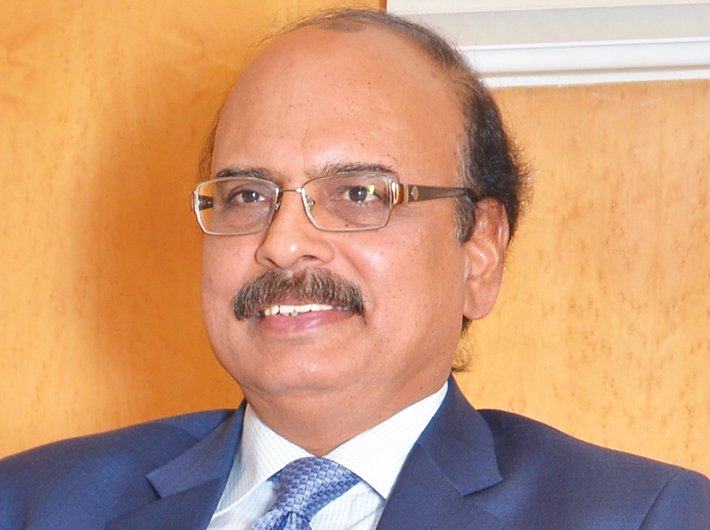Arun Tiwari, who joined the Union Bank of India as its CMD on December 26, 2013, began his career as a probationary officer in Bank of Baroda in 1979. He has worked in almost all key segments of banking in various capacities – across the country as well as abroad. In an interview with Sweta Ranjan, Tiwari talks about how his bank views the latest push for financial inclusion.
How many accounts have been opened in your bank under the Jan-Dhan Yojana?
Union Bank of India was given a target of opening 30 lakh accounts under the PMJDY. The bank, however, opened 39.61 lakh accounts under PMJDY with aggregate balance of '212.74 crore as on January 23. Our RRB [regional rural bank], Kashi Gomti Samyukt Gramin Bank, has also opened 5.53 lakh accounts with balance of '31.69 crore.
With so many accounts being opened the bank also needs to maintain the pace in terms of technological advancement.
Union Bank is a pioneer in technology implementation and use of state-of-the-art technology products. The present core banking system (CBS) infrastructure is sufficient to handle all types of customer transactions, including the PMJDY, without any bottlenecks. Capacity planning is done at yearly intervals based on transactions growth projection and new projects implementation requirements. To serve the PMJDY customers in a better way, Union Bank has put in place several interfaces like, (a) financial inclusion (FI) gateway for interfacing all business correspondents (BCs), (b) Aadhaar-enabled payment system (AEPS), (c) kiosk banking application, (d) e-KYC, (e) direct benefit transfer for LPG, (f) Aadhaar payment bridge system (APBS) and (h) Aadhaar seeding.
What are the challenges in terms of staff strength and infrastructure?
In terms of technology infrastructure, the bank is not facing any challenges. Network connectivity in remote areas, however, is still a challenge for BCs to do customer transactions. In addition to installation of ATMs by the bank in such areas, this issue is being addressed by telecom service providers. It may take some time to get better network connectivity in rural and remote areas. As for the staff strength, the bank has not only deployed sufficient staff at the branches, but has also sensitised them about all implementation aspects of the PMJDY.
Have transactions taken off in the new accounts?
The operations in these accounts are gradually picking up. Union Bank has geared up all equipment to ensure that all account holders get their RuPay cards fully activated which in turn is linked to the '1 lakh insurance cover. We are also strengthening BC deployment in rural areas to improve operations in these accounts.
How do you ensure prevention of unfair play and duplication of accounts?
Our bank has put controls at the system level to prevent the opening of duplicate accounts by the same customer based on their Aadhaar/PAN numbers or the name and date of birth. The National Payments Corporation of India (NPCI) is also building infrastructure to prevent granting more than one overdraft facility across the banking system in India.
Has your bank been able to realise the business viability of working with the poor?
Union Bank has been in the forefront of financial inclusion initiatives even before the launch of the PMJDY. We have undertaken not only opening of accounts, but also extended other facilities like microfinance and remittances. With all benefits like subsidies flowing through these accounts, the business viability of working with the poor is beyond doubt.
How sustainable is the existing ATM infrastructure to meet the demands of new accounts?
Union Bank has [its] own ATM switch infrastructure, which is capable of handling the load of present as well as future growth for the transactions under the PMJDY. Present utilisation of ATM switch is 45-50 percent and capable to accommodate the PMJDY accounts transactions.
The bank is continuously monitoring the system utilisation and performance and, if required, we will upgrade the infrastructure. The total ATM base of Union Bank at the end of December, 2014 was 6,618, against a branch network of 4,112. Micro ATMs/kiosks, numbering 7,000, which are deployed with the BCs, will also be enabled for online transactions. After the issuance of debit cards to PMJDY account holders, the ratio of debit card to ATM stands at 2,564:1 with an average daily hit of 85 per ATM. So the present network of ATMs is sufficient to meet the expected increase in hits from newly opened accounts under the PMJDY in the medium term.
Only a small portion of PMJDY accounts have been opened by the private banks. Is it the case that the responsibility of the scheme is largely on the PSBs? Does this mean that the PMJDY is seen as an obligation instead of a business opportunity?
It is to be appreciated that the reach of PSBs is far better than the private banks in covering the population of the country for financial
inclusion. Union Bank is very clear that PMJDY is not an obligation but a business opportunity for us to achieve sustainable growth.
The first step of reaching out to people and opening their accounts has been performed well, but what is going to be the next step for effective financial inclusion?
With the PMJDY, millions of households are now integrated to the banking system. The hard task however, is making transactions happen in these accounts such that it yields revenues for the service providers. Government transfers, i.e., subsidy payments under various schemes, will keep these accounts ‘alive’. However, from banks’ perspective, it will turn ‘viable’ when the customer starts doing transactions on her own, satiating her financial needs – of saving, credit, insurance and investment. Developing the banking habits among the masses would be a continuous challenge.
What are the prospects for mobile banking in India? How long will it take for India to become new Africa?
Mobile banking in India is picking up rapidly. As per the monthly bulletin of the RBI, there were 16.8 million mobile banking transactions with a balance of '113.2 billion in December 2014 as against 8.9 million transactions with a balance of '22.6 billion in December 2013. Banks have now tied up with telecom companies for USSD-based mobile banking which shall enable the rural population as well, to operate mobile banking seamlessly. India has a very high mobile density with over 900 million mobile users. However, there are only 40 million mobile banking customers. There is a huge potential for leveraging this technology and roping in mobile banking for the financial inclusion drive to create a payment ecosystem in the country. Moreover, the determined efforts of the government of India under its Digital India campaign will further stimulate the mobile banking demand by making customers better informed and tech-savvy.
sweta@governancenow.com
The interview appears in the June 1-15, 2015 issue

